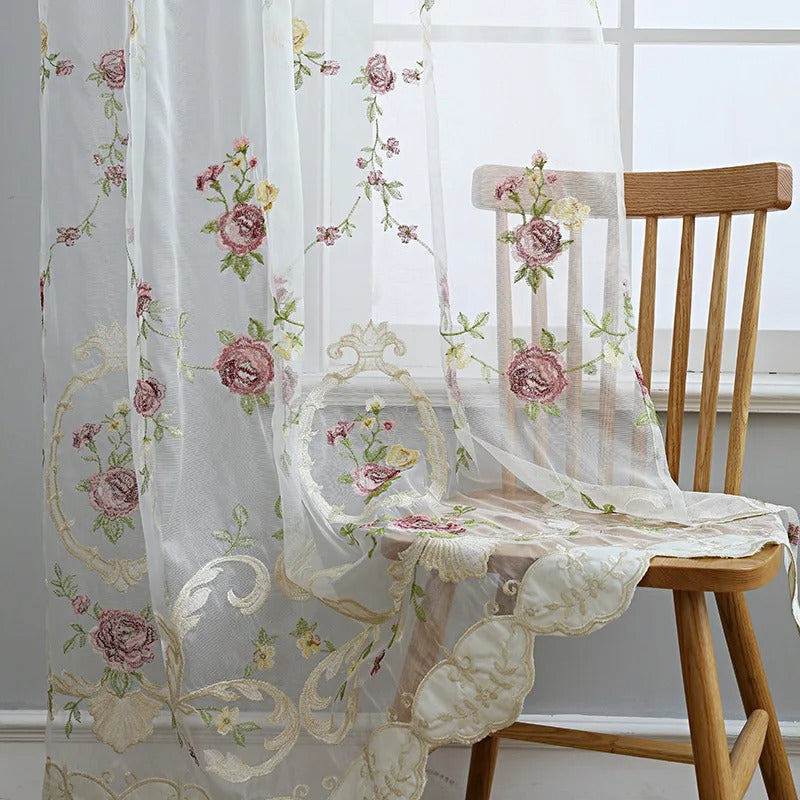Drapery isn't just a functional element in interior design; it's also an opportunity to add texture, color, and style to your space. Whether you're aiming for a cozy, traditional feel or a modern, minimalist look, the type of drapery you choose can significantly impact the ambiance of your room. From elegant swags to sleek panels, here's a guide to the different types of drapery styles and how to determine which one is best suited for your space.
Rod Pocket Drapes:
Rod pocket drapes are one of the most common and classic styles of drapery. They feature a sleeve or pocket along the top through which the curtain rod is threaded. This style creates a gathered, pleated effect when the curtains are open or closed, adding a touch of traditional elegance to any room.
Best for: Formal living rooms, dining rooms, or bedrooms where a traditional aesthetic is desired.
Tab Top Drapes:
Tab top drapes have fabric loops or tabs sewn along the top edge, through which the curtain rod is threaded. This style creates a relaxed, casual look and allows for easy movement along the rod.
Best for: Casual spaces like family rooms, kitchens, or sunrooms where a laid-back atmosphere is preferred.
Grommet Drapes:
Grommet drapes feature metal rings along the top edge through which the curtain rod is threaded. This style creates clean, modern lines and allows the curtains to slide smoothly along the rod.
Best for: Contemporary or minimalist spaces where simplicity and functionality are key.
Pleated Drapes:
Pleated drapes are characterized by folds or pleats sewn into the top of the fabric, creating a tailored, structured look. Common pleat styles include pinch pleat, goblet pleat, and box pleat, each offering its own unique aesthetic.
Best for: Formal spaces like dining rooms or home offices where a polished, sophisticated look is desired.
Sheer Drapes:
Sheer drapes are made from lightweight, translucent fabric that allows diffused light to filter through while still providing some privacy. These curtains can be hung alone for a soft, ethereal look or layered with heavier drapes for added dimension.
Best for: Rooms with abundant natural light, such as living rooms or sunrooms, where a light and airy feel is desired.
Blackout Drapes:
Blackout drapes are constructed from heavyweight fabric with light-blocking properties, making them ideal for rooms where darkness and privacy are essential, such as bedrooms or home theaters. These curtains are often lined with a special backing to enhance their light-blocking capabilities.
Best for: Bedrooms, nurseries, or any room where light control is a priority.
Swag and Jabot Drapes:
Swag and jabot drapes feature elaborate fabric treatments with draped swags and cascading jabots, creating a formal, luxurious look. This style is often used in grand, traditional interiors to add drama and sophistication.
Best for: Formal dining rooms, ballrooms, or rooms with high ceilings where dramatic drapery treatments are appropriate.
When choosing the right drapery style for your space, consider the overall aesthetic you want to achieve, as well as the function of the room. Are you aiming for a formal, elegant look, or do you prefer something more casual and relaxed? Additionally, think about practical considerations such as light control, privacy, and maintenance requirements.
If you're unsure which style would best suit your space, consider seeking the advice of a professional interior designer. They can help you navigate the myriad options available and create a customized drapery solution that perfectly complements your home's décor and meets your specific needs.










